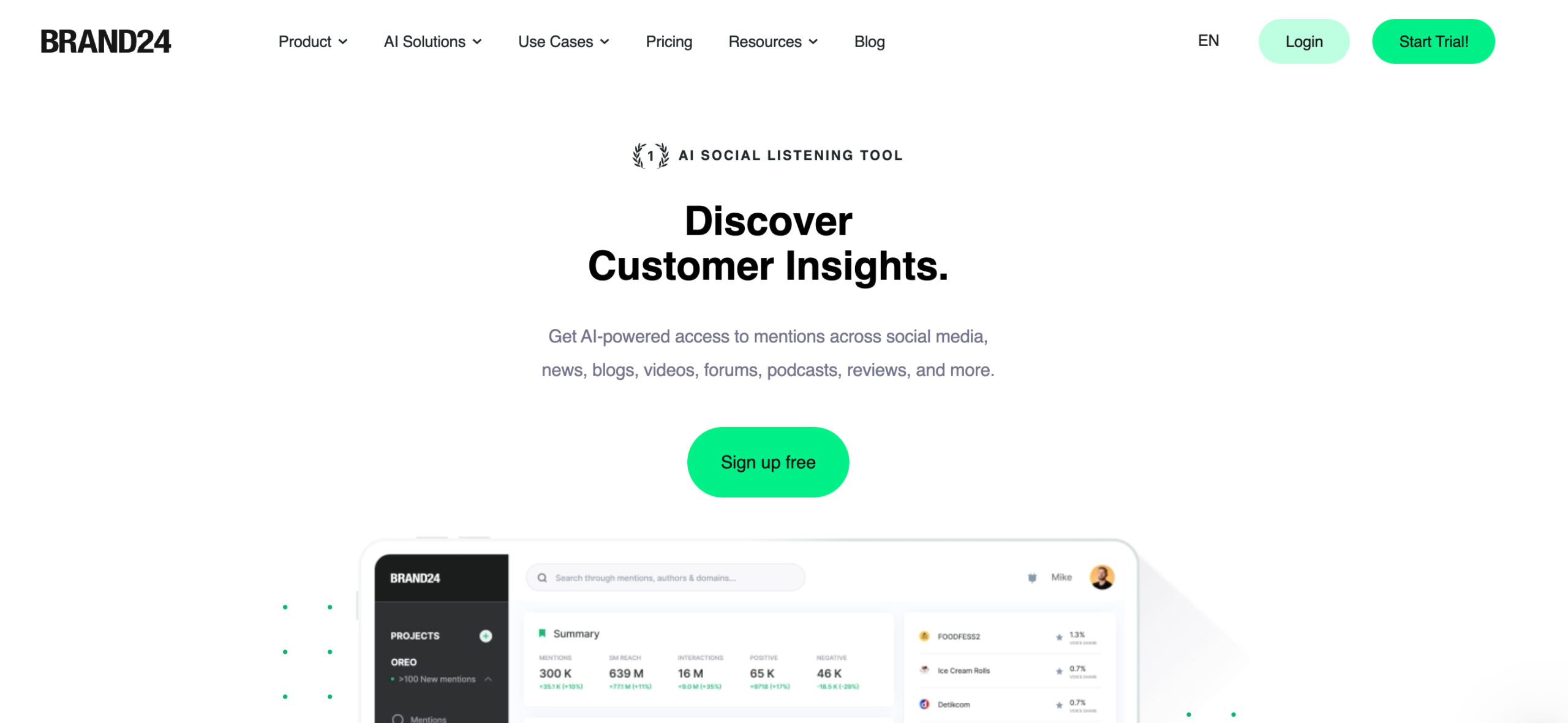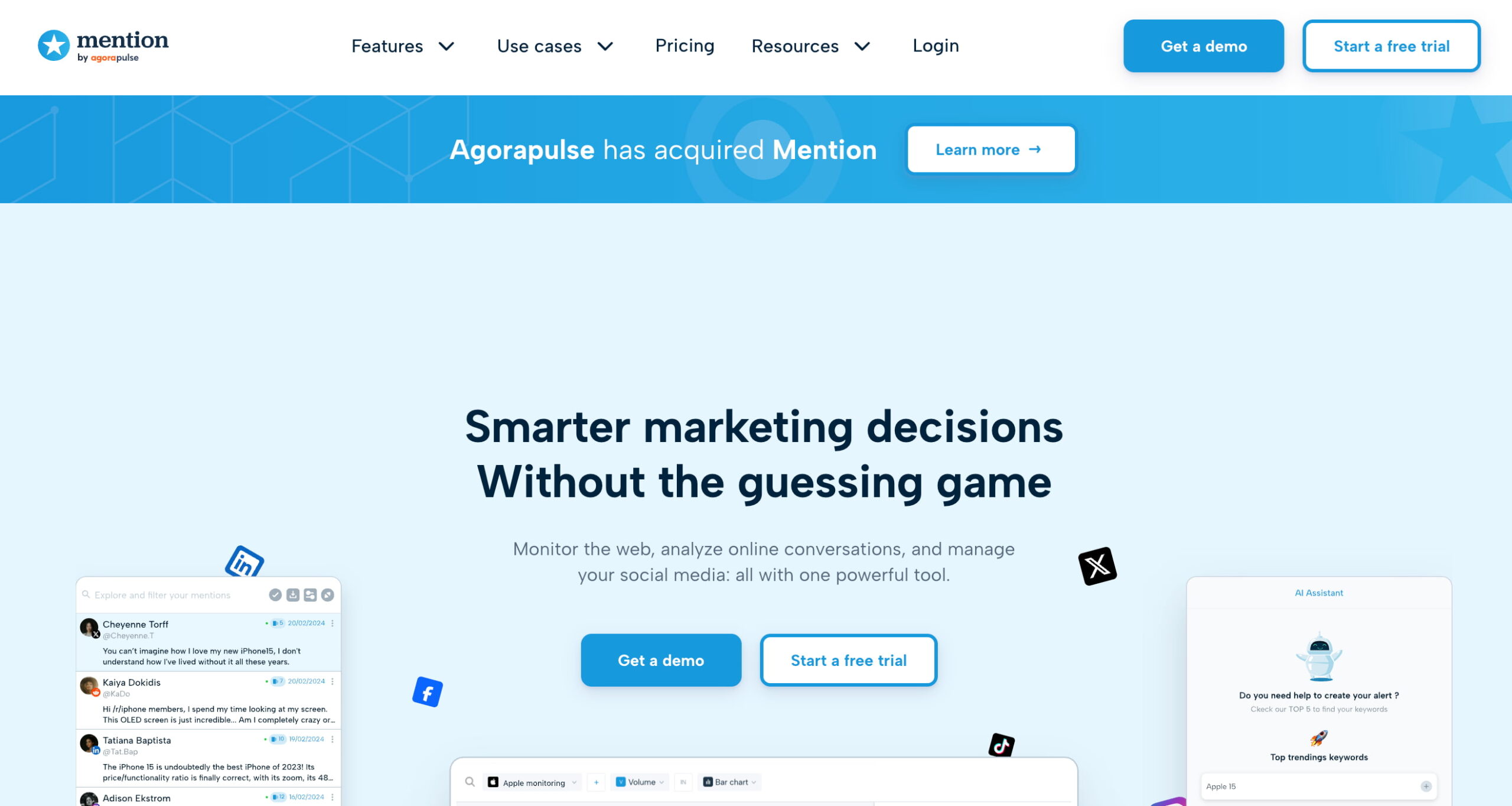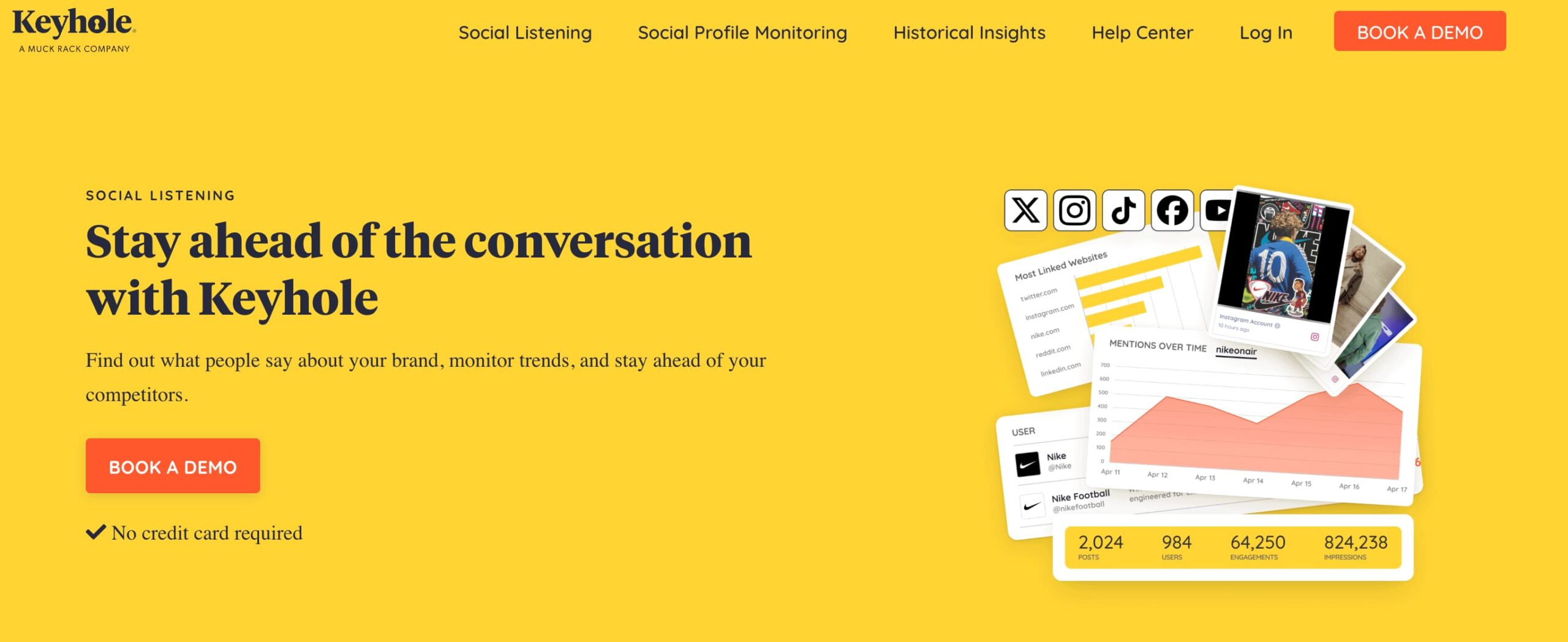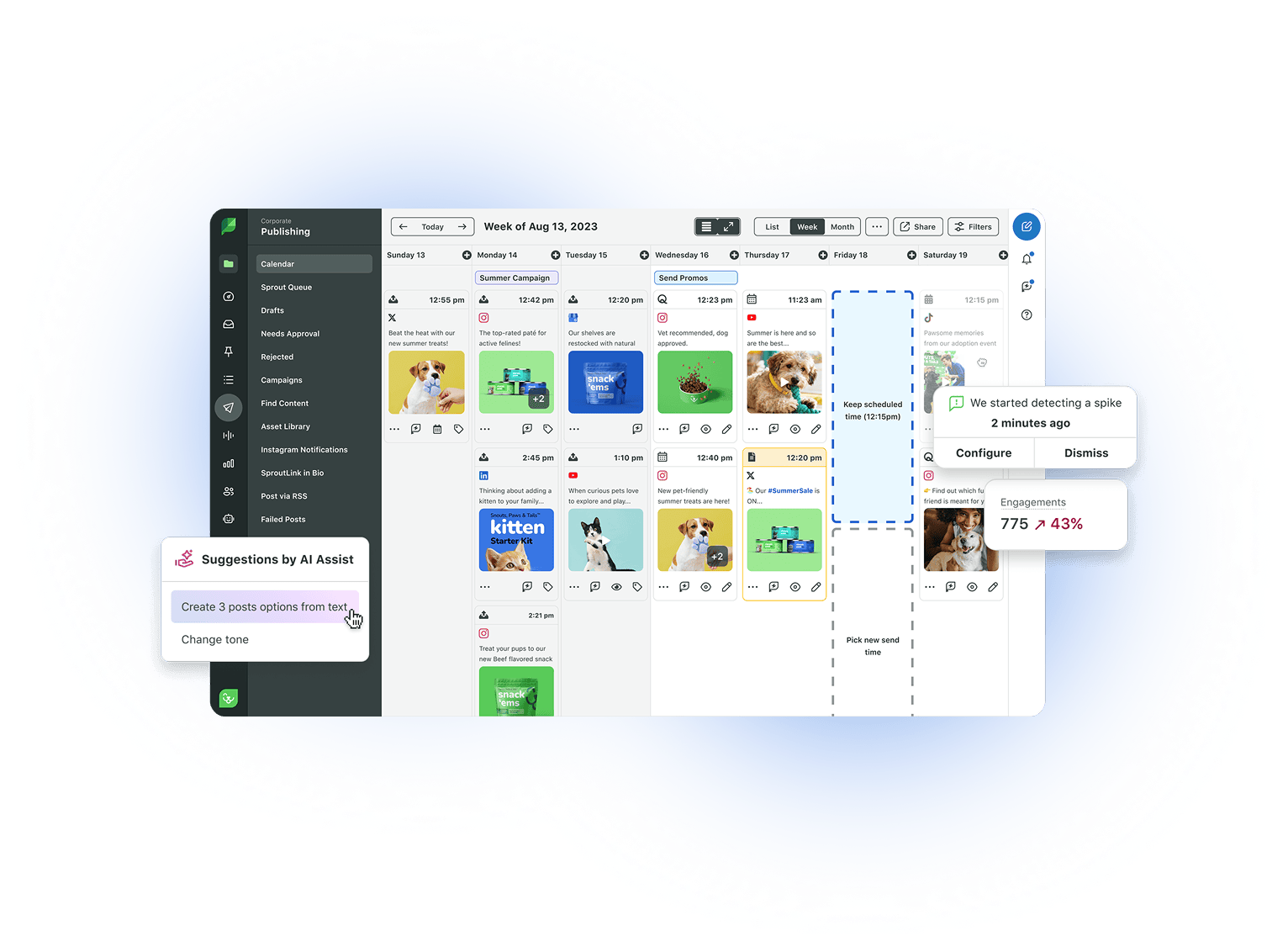Facebook monitoring made easy: A guide for social marketers
Table of Contents
Facebook remains one of the world’s largest social platforms, making it essential for brands seeking to reach diverse, global audiences.
With feedback and communication tools like ratings, reviews and Messenger, the platform supports brands in building trust with their audience and starting conversations that lead to sales. Facebook analytics also supports social media marketers in diving deeper into content performance and engagement to see what’s working and what isn’t.
But keeping track of your Facebook likes, comments and messages manually becomes a full-time job without support.
This article will highlight the benefits of Facebook monitoring and best practices to ensure you do it correctly. Plus, get recommendations for using Sprout Social and other tools to streamline the process.
What is Facebook monitoring?
Facebook monitoring is the systematic process of tracking, analyzing and responding to all audience interactions with your brand across Facebook’s ecosystem. This includes monitoring wall posts, comments on organic posts and ads, page mentions, direct messages through Messenger, customer reviews and tagged content.

For social media marketers, Facebook monitoring allows you to keep a pulse check on your brand. It supports your understanding of how people feel about your brand and your ability to respond to feedback. This timely engagement deepens your audience’s connection to your brand and makes them feel seen, heard and valued.
Benefits of Facebook monitoring for brands
Facebook monitoring transforms how you understand and engage with your audience. The strategic benefits include:
- Crisis prevention: Spot negative sentiment early and address issues before they escalate into reputation damage
- Content optimization: Identify which posts drive engagement and replicate successful content strategies
- Customer relationship building: Respond promptly to customer inquiries and build stronger brand loyalty
- Competitive intelligence: Track industry conversations and identify market opportunities
- Brand sentiment tracking: Measure how your audience perceives your brand over time
Best practices for Facebook monitoring
Monitoring Facebook messages and comments seems straightforward at first, but if you want to make the most of your efforts, here are some best practices to remember.

Set clear goals and objectives
What do you want to achieve with Facebook monitoring? Do you want to improve customer service by responding to questions faster, increase engagement or improve brand sentiment? Setting clear goals gives your monitoring efforts direction and connects them to your overarching Facebook marketing strategy.
Choose the right Facebook monitoring tool
Facebook monitoring platforms streamline your efforts and improve efficiency. While native tools provide basic functionality, comprehensive platforms like Sprout Social deliver the advanced features growing brands need.
Do you have a large social media marketing team? Consider choosing a platform with robust collaboration and approval features. An all-in-one tool that offers end-to-end management and Facebook analytics that integrates with your other social media platforms will save you time and energy.
Develop a monitoring strategy
So, you’ve established your goals and objectives and settled on a tool. Now, you must determine how exactly you want to respond to engagements. Creating a monitoring strategy gets everyone on the same page about how your brand responds to engagements.
Key considerations should include defining responsibilities, approval workflows and recommended response times.
Monitor relevant keywords
To further streamline your monitoring efforts, use your monitoring tool’s Tagging features to track the most relevant keywords to prioritize messages. While your brand name and its variations are essential, some other keywords to consider are:
- Brand product names
- Brand hashtags
- Campaign hashtags
- Industry hashtags, if applicable
- C-suite names if they’re active online or an industry thought leader
- All the above repeated for a competitor if you want to conduct a marketing competitor analysis
For example, sportswear brand Nike (or a competitor) would track their #WinningIsntForEveryone Paris 2024 Paralympics campaign hashtag to see how their audience is engaging with the posts.

Source: Facebook
Use analytics to track results
Use analytics to see how well your Facebook monitoring strategy is working. Use sentiment analysis to see if brand perception skews more positively or negatively. Facebook audience insights will reveal if engagement rates have improved since you started monitoring.
Facebook listening will show you what content resonates with your audience the most.
Facebook’s native monitoring capabilities
Meta Business Suite offers foundational tools for monitoring your brand’s presence on Facebook and Instagram. Its unified inbox brings comments and messages from both platforms into one place, which is a solid start for smaller teams.
But as your brand grows, you’ll find these native tools have limits. They operate in a silo, separate from other social platforms and your broader marketing tech stack. For a comprehensive strategy that scales, you need a platform that unifies all your social conversations and data.
How to use Sprout Social for Facebook monitoring
Sprout Social has many features to ensure you never miss a comment or message. Here’s a step-by-step walkthrough of the key capabilities to use for Facebook monitoring.
Step 1: Get familiar with the Smart Inbox
Sprout Social’s Smart Inbox feature unifies all of your messages, mentions, comments and reviews into a single dashboard. It also tracks brand keywords, search results and hashtag campaigns in real-time.

Step 2: Respond to messages
To respond to a message from Facebook, click the arrow icon in the bottom right of the message. You have the option to take the conversation from public to private by clicking Switch to Private Message (unless the user’s Facebook settings don’t allow you to).
You also have the option to hide comments by tapping the three-dot icon and clicking Hide on Facebook. This feature supports the protection of your audience and brand image from spam or insensitive content.

Step 3: Use Case Management to resolve customer issues faster
Use Message Actions to categorize messages and track what’s complete and what requires further action. Save messages to come back to later, or mark them as complete. You can also categorize messages as positive, negative or neutral to better track your overall brand sentiment.
Plus, use Case Management to create cases for more complex issues that need attention. You can pass the message on to another team member to respond to it without losing context from the original conversation.

Step 4: Use Sprout Social’s task and tagging features
Use our Task and Tagging features to assign messages to specific team members and tag the messages with keywords to track them later. Tags allow you to associate incoming or outgoing messages with your brand’s product launch, campaign or other initiative.

Step 5: Use Sprout’s collaboration features to improve workflows
Create Message Approval Workflows to ensure every response meets your brand’s standards. Sprout Social’s collaboration features allow you to define specific publishing and approval abilities for certain team members.

Once enabled, users submit messages for approval. This action triggers a notification to the team member with approval permission so they review and respond.
Ready to transform your Facebook monitoring strategy? Start your free 30-day trial and see how Sprout Social’s Smart Inbox unifies all your social conversations in one powerful dashboard.
Facebook monitoring tools for social marketers
There’s a Facebook monitoring tool for every brand and budget. You just need to find the one that works for you. Here are some of the most popular platforms on the market.
Sprout Social
Sprout Social’s Facebook management tools help you stay on top of everything. The Smart Inbox pulls comments, reviews and Messenger conversations into a central dashboard to review and respond to them in one place. Our social CRM provides conversation history and customer details to personalize responses.
Listening features like Query Builder and Alerts will notify you as soon as you get a brand mention or a spike in message volume. Plus, collaboration tools like Tagging, task routing and approval workflows prevent duplicate efforts and keep everything organized, efficient and on-brand.
See the Sprout Social difference for yourself and try us for free for 30 days.

Brand24
Brand24 is an AI-powered social listening tool that tracks mentions across social media, news, blogs, videos, forums, podcasts, reviews and more. Its Facebook integration allows brands to track public mentions like posts, comments and reviews.
It also has customized alerts to help users respond to mentions quickly. Beyond monitoring, it also has reach and sentiment analysis, competitive analysis reports and personalized recommendations with its AI-Brand Assistant tool.

Mention
Mention (acquired by Agorapulse) helps users keep track of social media conversations, including Facebook mentions. In real-time, users can monitor what’s said about a company, including its products, competitors and customers.

They also have a keyword tracking function that allows users to Monitor, measure and engage with opinions shared about specific terms.
Awario
Awario is a brand management platform that tracks conversations across social media, news, blogs, videos, forums and reviews. The tool’s media monitoring helps users monitor all relevant conversations on Facebook by tracking keywords and mentions.

It also offers access to historical Facebook mention data and sentiment analysis.
Keyhole
Keyhole is a social media management tool with publishing, listening, analytics and historical insights capabilities. It can track any public Facebook page, yours or competitors,’ and provide in-depth performance and comparison insights.

It also has hashtag and keyword tracking and sentiment analysis.
Meta Business Suite
Meta Business Suite is a centralized space for Meta users to manage their Facebook, Instagram, Messenger posts, ads and communications and track their content performance. Its Inbox feature lets you see all of your Messenger, Instagram Direct messages, Facebook and Instagram comments in one place.

You can filter messages by platform, respond to them directly from the Inbox, organize and assign them to people to address as well.
Build stronger customer relationships with Facebook monitoring
Facebook monitoring is more than keeping an eye on likes and comments. It’s about understanding what your audience cares about—from your brand to your industry as a whole. It’s also about how you respond to these conversations.
The right tools and strategy will help you react quickly to feedback, improve customer relationships and avoid potential issues before they escalate. Want to take your Facebook game even further? Learn how to get more out of your social presence with our tips for increasing Facebook engagement.
Facebook monitoring FAQs
How often should I monitor Facebook activity?
Monitor urgent customer service issues in real-time, but daily check-ins suffice for general engagement. Automated alerts ensure you never miss critical conversations.
Can I monitor competitors' Facebook pages?
Yes. Depending on your third-party tooling’s capabilities, you can track public Facebook Pages to analyze your competitors’ content strategy, engagement rates and audience response. Comprehensive analytics tools allow you to benchmark your performance against theirs, giving you a clear competitive advantage.
What's the difference between Facebook monitoring and Facebook analytics?
Monitoring is the real-time action of listening and responding to conversations as they happen. Analytics is the strategic review of historical data to measure performance and find trends. A strong social strategy needs both—monitoring to manage your community and analytics to prove your impact.
How much time should my team spend on Facebook monitoring daily?
The time required varies by audience size and engagement volume. A platform with a unified inbox and automation rules reduces the time spent on routine monitoring, freeing your team to focus on high-impact activities.
Do I need admin access to monitor Facebook pages effectively?
To monitor and respond to messages on your own brand’s Page, you’ll need the appropriate admin or editor permissions. To monitor the public content and performance of a competitor’s Page, you don’t need any special access.



Share